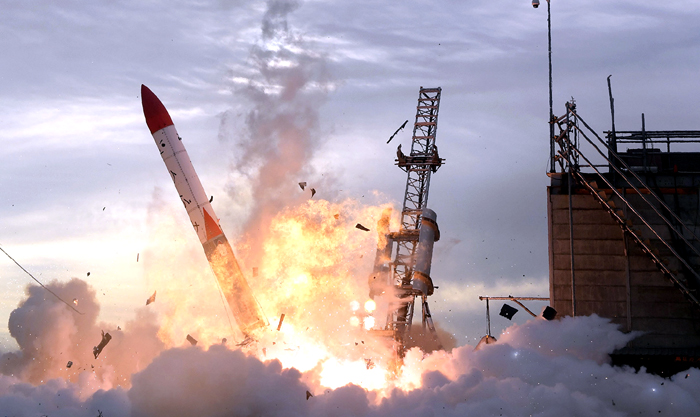On its sixth trip, the unmanned rocket sent satellites into space.
(AFP) TOKYO: After Wednesday’s failed launch, Japan’s space agency said it told its Epsilon rocket to blow itself up because there was a problem that made it unsafe to fly.
On its sixth mission, the unmanned rocket sent satellites into space to show off “new” technologies.
A JAXA official said on TV: “The rocket can’t continue a safe flight because it would be dangerous if it fell to the ground.”
“So we took steps to make sure that didn’t happen, and we sent the signal to destroy the rocket,” he said, adding that they didn’t know what went wrong right away.
It was Japan’s first failed rocket launch since 2003, and NHK said the order for the rocket to blow itself up was given about 10 minutes after liftoff.
A JAXA livestream of the launch from the Uchinoura Space Center in Kagoshima, Japan, in the south of the country, was cut off, and the presenters said there was a problem but didn’t say what it was.
Since 2013, the solid-fuel Epsilon rocket has been used.
It is smaller than the country’s last liquid-fueled model, and it replaces the solid-fuel “M-5” rocket, which was taken out of service in 2006 because it was too expensive.
JAXA says that Epsilon is a solid-fuel rocket that will make it easier for people to get into space and start a time when everyone can use space actively.
A JAXA fact sheet about the mission called “Innovative Satellite Technology Demonstration-3” said that RAISE-3, a box-shaped satellite carried by the rocket, was supposed to orbit the Earth for at least a year.
Universities, research centres, and businesses were asked to come up with new technologies that could be tried out on RAISE-3.
There was an experiment to “harvest energy with a lightweight integrated origami structure” and a “pulsed-plasma thruster” from Tokyo Metropolitan University.
The fact sheet said that the Epsilon rocket also launched eight microsatellites along with RAISE-3.
Japan’s last failed space rocket launch was in 2003, when it tried to send two spy satellites into space to keep an eye on North Korea.

